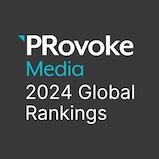Arun Sudhaman 30 May 2023 // 9:29AM GMT

The PR industry's impressive pace of growth over the past two years paints an undeniably rosy picture of agency prospects. However, it would be misguided to conclude that there is little to trouble the communications sector.
In the UK, the world's fastest-growing PR market in 2021 saw that pace significantly decline in 2022, perhaps reflecting the market's price-conscious nature. Last year's growth figures must be weighed against the rising costs that have stymied agency expansion more recently, alongside such other factors as extended payment terms, never-ending pitches, and shifting budgets.
It seems clear that these issues are not limited to the UK alone. Specifically, decision-making delays point to an overly cautious client environment, where corporates are seeking to defer their PR spending. One agency head likens the situation to a "secret slowdown", typified by clients that might ghost agencies, or might take forever to pay.
Asia-Pacific firms, always disproportionately affected by caution further West, grew by just 4% in 2022, despite being touted as a global growth engine. Much of that, no doubt, can be traced to China's prolonged Covid slowdown and the geopolitical concerns that have stymied MNC spend. Both of those factors persist, while the broader tech slowdown helps to explain an environment where clients continue to expect more for less.
Europe fared better in 2022, up 28% in constant currency terms, but a considerable element of that growth is fueled by acquisition from some of the continent's leading players. From a market perspective, this kind of consolidation can serve to obscure the true nature of growth, even if Europe's economic outlook is better than might have been predicted six months ago.
Which leaves the US, as ever doing double duty as not just the world's biggest PR market, but also its most dynamic. And while America also fell prey to slowing growth in 2022, down to 11% from 16% the year before, it would be a little churlish to question another year of double-digit expansion from such a massive base.
Much has been made of the various factors that have driven the PR industry's exceptional performance since the dark days of 2020. There seems little doubt that PR firms are outperforming their advertising and digital brethren, thanks to their ability to address a broader range of stakeholder concerns, whether geopolitics, diversity and inclusion, ESG, employee engagement, health and wellness, or workplace transformation.
Yet, if that display suggests a Covid-era dividend, then it would be wise to keep sight of the baggage that has weighed so many down during the past three years. Employees are reporting record levels of stress, burnout, and fatigue. Meanwhile, agency leaders are grappling with the pastoral responsibilities that have been thrust upon them during an extraordinary period of change.
In our last wave of industry research, conducted in conjunction with Stickybeak, more than half of all respondents predicted agency growth of less than 10% in 2022. It turns out they were right. The same study flagged persistent concerns about price rises and recruitment. While the latter issue may have eased somewhat as the 'Great Resignation' fizzles out, the industry continues to contend with the former, already spurring layoffs at many agencies. The kinder, gentler era that was advertised during the past three years may yet fall prey to the demands of a 24/7 industry that sometimes appears at odds with employee wellbeing.
It is probably too early to suggest that two years of solid growth herald a fundamental reappraisal of the public relations discipline. Even so, it seems more than likely that this is not just a short-term rebound either. The remarkable growth and consolidation of C-suite focused firms indicate that communications has never been more highly valued in the corridors of power, even if proving that value continues to vex many minds. The hope remains that this elevation is rather more inexorable than previous gains, enabling the in-house communications function to settle at a higher perch, rather than receding in the face of economic concerns.
One year ago, I argued that the PR industry would do well to heed the lessons of the Covid era. 12 months later, it seems clear that a newer set of challenges have emerged, including the ever more automated, AI-fueled communications landscape that appears increasingly inevitable. From ghosting clients to ghosts in the machine, the communications sector has much to contend with.
Yet, if we have learned one thing from recent years, it is that the PR industry is not just incredibly resilient, but adaptable too. Two years of impressive growth should reassure us of that at least, along with much more — particularly in terms of the industry's ability to address the era's defining challenges. Those qualities will no doubt help agencies navigate a rather more turbulent environment than they would have hoped for in 2023.



































.jpg)

















